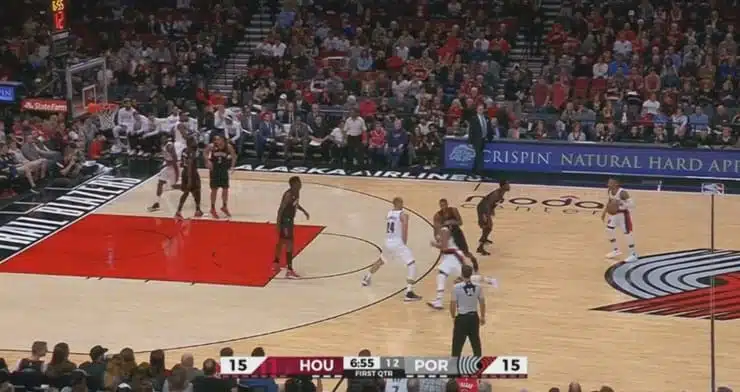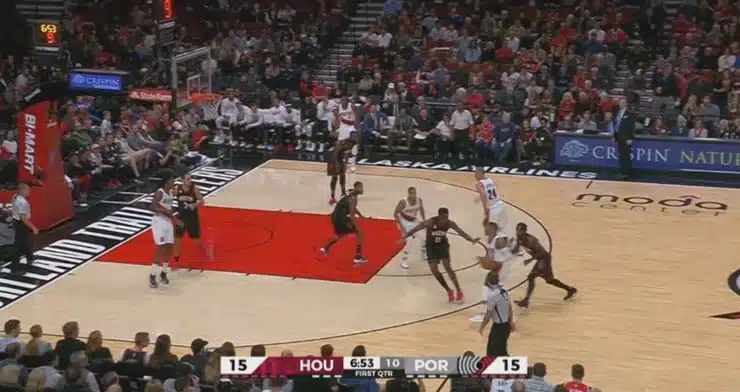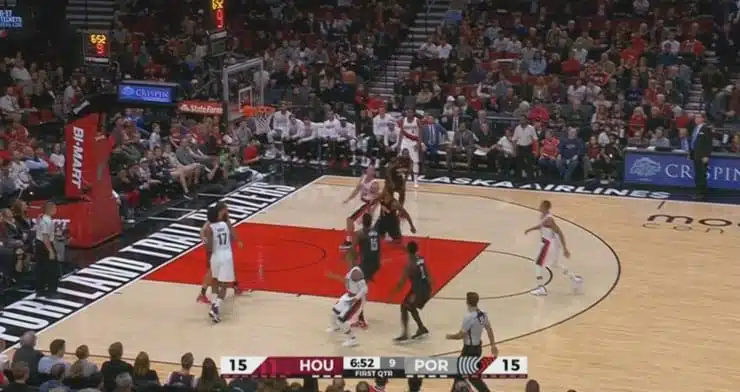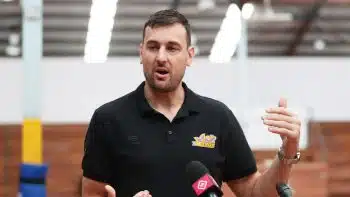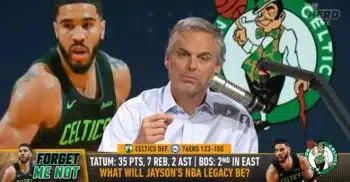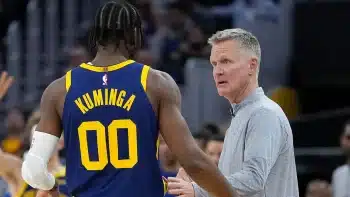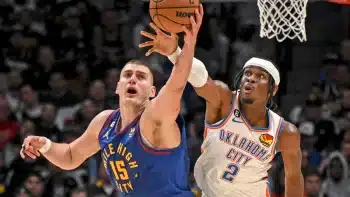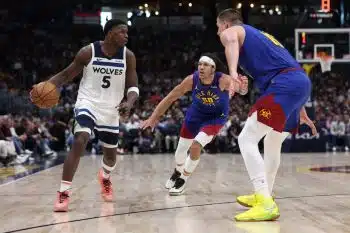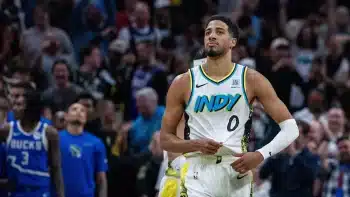NBA
The Big 3: Chris Paul, J.R. Smith and Play of the Week
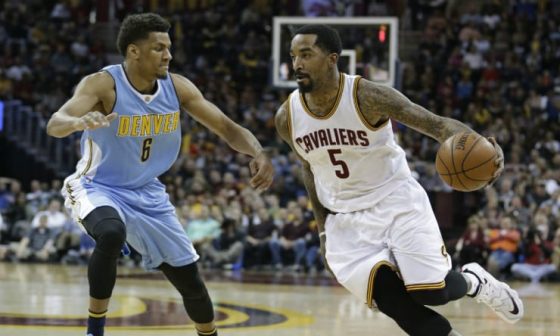
Welcome to the inaugural installment of The Big 3, where we’ll convene each Friday for a snapshot of three intriguing NBA items from the week gone by. These items can be anything – numbers, trends, play sets (we’ll try to highlight one “Play of the Week” each week), hilarity, you name it. We won’t necessarily cover the biggest story every week, but instead we’ll keep you on your toes.
This is a reader-driven column, folks! We’ll ask for your favorite play sets during the week (you can tweet these to me, @Ben_Dowsett), and we’ll take reader input on which topics to cover every Friday.
Without further ado, let’s get started!
Chris Paul, The Clippers’ Bench and RPM
ESPN’s Real Plus-Minus caused a stir when it hit the scene a couple years back, and it continues to occupy its own little niche within basketball nerd-dom. It’s a statistic designed to capture all the traditional elements of plus-minus, but infuse them with better data to help us throw some additional context into the mix.
To do that, RPM attempts to measure not just plus-minus, but a player’s “on-court impact” – including teammate, opponent and box score context. Over a large enough sample, the ultimate goal is to be able to weed out all the noise that comes with single-player plus-minus in a game where 10 players are on the court at once, and isolate an individual’s impact on the game.
In smaller samples, though, some pretty entertaining outputs can arise. Remember that things like teammate and opponent quality are factored in – over small minute samples, these might have outsized effects. For a convenient example, we turn to Chris Paul and the L.A. Clippers.
So far this year, defensive RPM estimates that CP3 has improved the Clippers’ defense by over three points per-100-possessions simply by stepping on the floor. This figure has only been topped for a point guard once over a full season in the three-plus-year history of RPM (Eric Bledsoe in 2013-14), but that’s not really the remarkable part. Here’s the remarkable part: Second place among point guards is Jeff Teague, who improves the Pacers’ defense by 0.67 points per-100.
For those quick with the arithmetic, that’s barely one-fifth of Paul’s 3.24 figure as of Friday afternoon. Just 11 of the 83 point guards on this list are even in the positive figures (DRPM is tough on point guards); the other 10 don’t combine to a positive figure as large as Paul’s. Clearly something is happening here.
“Something” in this case is mostly the Clippers’ bench. It stands to reason that most teams get worse when their starters leave the floor, but the Clippers under Doc Rivers have mostly stuck with a platoon-style substitution pattern that consistently rates their bench units among the worst in the league. Lesser guys coming off the bench don’t have starters alongside them to cover their holes.
To understand Paul’s crazy-high DRPM rating then, we can start by looking at the guys who play when he doesn’t. The three highest minute-loggers with CP3 on the bench are the team’s three bench ball-handlers – Jamal Crawford, Austin Rivers and Raymond Felton. Unsurprisingly, all three are firmly in the negatives for DRPM, and Crawford is among the worst guards in the league so far.
It’s not even just the guys who play without Paul, either. Guys who spend a ton of time on the floor with each other tell RPM more about themselves during the minutes they don’t play together, and a look at the defensive figures during the very brief minutes where other starters play without Paul tells most of the rest of the story. J.J. Redick has only logged 14 minutes without CP3, but the team’s defense has been 20 points per-100 worse than when he plays with Paul. DeAndre Jordan has only played 42 such minutes, but the defense is 10 points worse per-100.
These are small samples, but they can have a huge effect. This isn’t to say that Paul doesn’t deserve his high rating – he’s been magnificent, and clearly one of the best players in the league on both sides of the ball. His gaudy steal numbers also trigger the box score element of RPM, and there’s surely other noise involved we haven’t accounted for.
For now, though, Paul is a gleaming example of how player value is so dependent on the other guys on the floor. The best are the best no matter what, but how we perceive them can be affected hugely by the guys they play with.
J.R. Smith or J.R. Spliff?
J.R. Smith is having a bit of a weird year… but maybe it’s just his alter-ego, J.R. Spliff.
Jokes aside, Smith is in one of the worst funks of a long career that’s seen its share of ups and downs. He took at least five shots and made fewer than half of them for each of the first eight games this season, and only avoided that sub-50-percent distinction for every game this year with a 3-for-3 performance against Portland in late November. Going back to Game 4 of the NBA Finals against the Warriors last year, that one Portland game saved Smith from a streak of 18 straight games without making half his shots – the second-longest of his entire career, and one that would still be running today.
For the year, Smith is dangerously close to crossing under the 30 percent plateau – from the field, not from deep. He has the lowest shooting percentage of any player in the NBA who has attempted at least 100 shots so far.
Smith is being outplayed and outshot by Iman Shumpert as the two continue their yearly exercise of performing completely contrary to all expectations from the year before. Last year it was Smith surprisingly stealing Shumpert’s starting spot, and the early signs are there that a switcheroo might have to happen again. Smith is one of the streakiest shooters in the league, though, so here’s betting the world champions won’t be too fussed about his situation for at least a few more months.
Play of the Week
As we noted above, our third segment each week will be my favorite play set – sent to me by a combination of my Twitter followers and our Basketball Insiders staff. We’re looking for ingenuity and creativity here, and a bit of flair is never a bad thing.
Our inaugural set comes from @gusweinstein on Twitter, and involves the Portland Trail Blazers from their game Sunday against the Houston Rockets. The set (we’ll show it again later so you don’t have to scroll up and down, don’t worry):
Watch it once more to keep it in your mind, and then let’s break it down.
Damian Lillard brings the ball up the floor, and at the top of your screen, Ed Davis heads over to set a simple down screen for C.J. McCollum.
McCollum might sometimes just receive a pass from Lillard there and get into a pick-and-roll with Davis, but in this case, he sprints over to Lillard to set a 1-2 pick the Blazers like to use to throw teams off – sometimes McCollum will slip the pick, sometimes he’ll set it, but the action are randomized based on defense activity and they often find a wide open three for one guy or the other.
Here, though, it’s just a decoy. McCollum sprints through Lillard’s man and over to Mason Plumlee, who is preparing to set up for an action the Blazers run more than any other team in the league: An off-ball flare screen for a shooter. Normally, Lillard would be lofting a pass for McCollum as soon as Plumlee’s screen freed him up with space:
That’s just another decoy this time, though. Instead of continuing in that direction, catching a pass and rolling toward the hoop in a two-on-one with Plumlee, McCollum cuts back toward the foul line as Plumlee heads up to set what looks like a standard high pick-and-roll screen for Lillard.
By now you should be realizing that nothing in this set is what it appears, however. This isn’t just a standard high pick-and-roll – McCollum’s action makes it something more complex. He hangs out near the foul line, prepared to hit Clint Capela (Plumlee’s man) with a surprise back screen the moment Capela tries to get back to Plumlee’s hard roll to the hoop.
As it turns out, this back screen is never even necessary – because of the gravity of Lillard’s shooting off the bounce, Capela is way up at the three-point line making sure Dame doesn’t pull up. Look at that last picture again, and see if you can spot the options available to Portland here.
Normally, both Capela and Patrick Beverley (guarding Lillard) could freely focus on trapping Lillard, confident in the team’s help scheme to back them up, but McCollum’s presence gums all that up. Suddenly, poor Trevor Ariza is stuck between two crappy options:
- Stick with Plumlee’s roll: First off, Ariza might still get dunked on here. Plumlee is much bigger than him and has a head of steam to the basket. Secondly, even if he does a good job, switching to Plumlee leaves McCollum all alone. Look at the last picture once again – McCollum has half the court to quietly slide up, take a pass from Lillard and hit a wide open three. The best possible outcome for Houston here is Beverley sniffing this out and switching onto McCollum himself, but that’s a very tight time window – and even if he manages it, that still leaves Lillard with the ball, one-on-one with a seven-footer. Not great.
- Stick with McCollum: Plumlee gets a wide open dunk.
As it was, Ariza was so confused that he pretty much picked neither, and he was dead before the ball left Lillard’s hands:
Think you’ve got it? Alright, now watch the clip again.
The usual poetry from head coach Terry Stotts. If the Rockets lean too far anticipating the flare screen for McCollum – which the Blazers run for him or Lillard at least 10 times a game – Lillard is running a pick-and-roll against only one defender. If Ariza makes the wrong call either way, their best hope is Lillard going to work against a big. If they overplay Plumlee’s roll, Lillard – the second-best off-the-dribble shooter in the league – is firing away with space. There are no great choices, and it’s literally impossible for the human brain to calculate which is the least damaging in the amount of time necessary here. We just spent half a column breaking it down, and even I still barely get it.
Want to see your team’s play in next week’s Play of the Week? Tweet @Ben_Dowsett with your favorite sets from now until Thursday. The best set makes it into the column!


